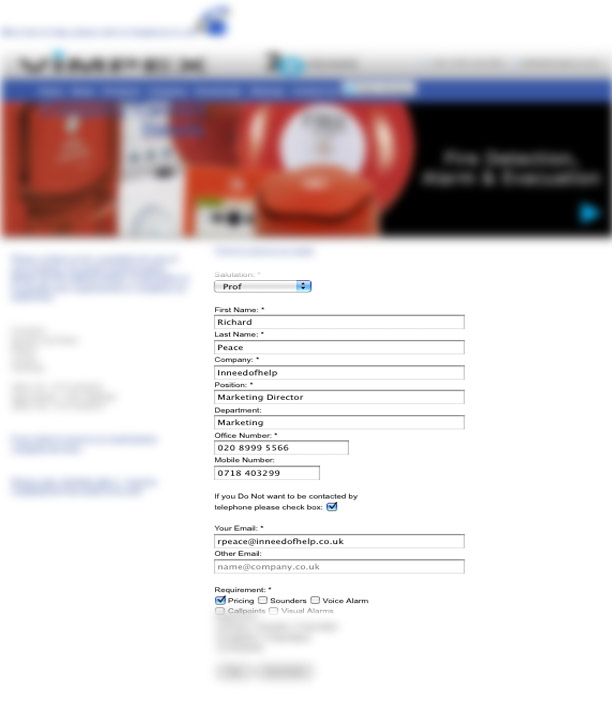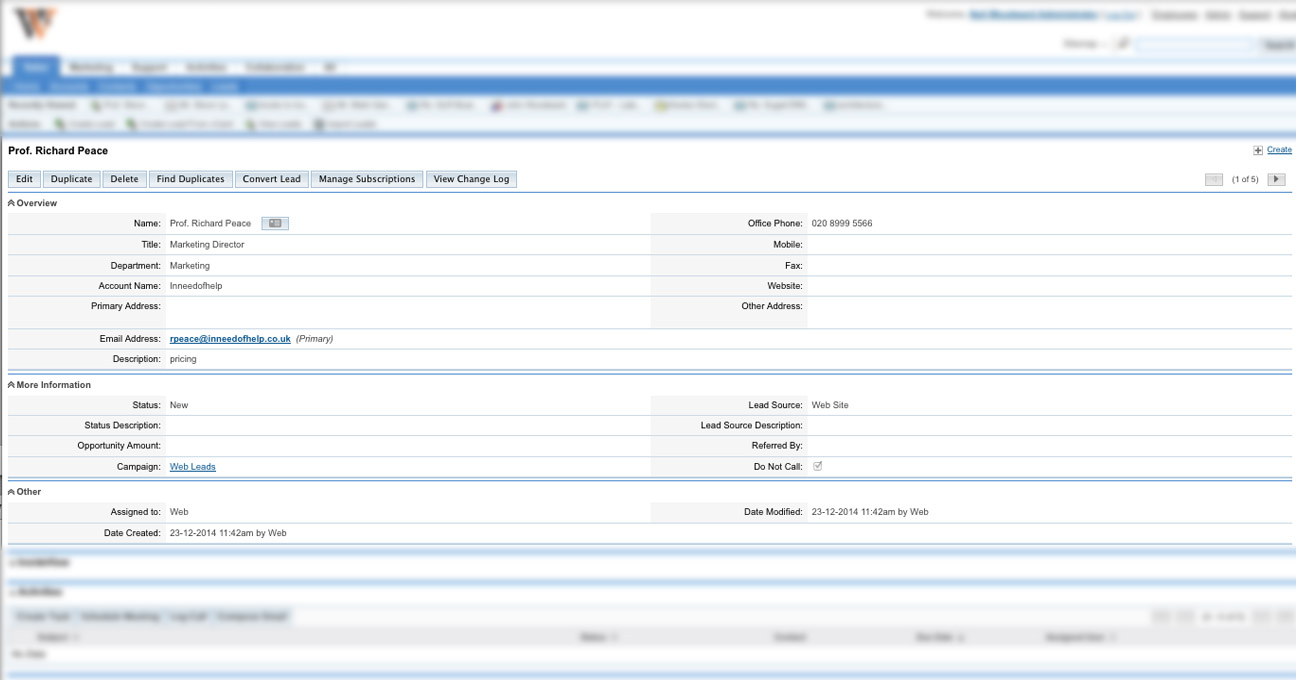“Are your web communications a big let down?” asks Neil Woodward
 Neil Woodward
Neil Woodward
BEng MBA MCIM
Connect ![]()
Neil is a CIM Board Member for the Greater London Region. He has helped create start-ups and worked in SMEs as well as large enterprises. His skills have come through experience in Product Management and Marketing for a number of multi-national organisations, managing the customer experience from the first interaction through to product/services obsolescence. His technical background along with his business experience allows him to understand digital media and business processes, making the business and customer touch-point interactions seamless. He is currently director of a new start-up, as well as running his own specialist product standards consultancy practice, WTECS.
As more business is performed through company websites it becomes even more important to get communication with the customer right.
Is your experience anything like mine, where you complete the online form, to get more information about a service or product that you are interested in, and then never get a response back from the company?
You can only conclude one of three things from the lack of response, either that they never got to the email, were not interested in your enquiry or were too busy to respond?
From a marketing perspective, you’ll recognise what it takes to generate that web enquiry: A great website has been designed. Money and time was spent optimising it so that it was found readily on search engines. Often Pay Per Click (PPC) ads were employed too, costing money. And significant content was written to engage the customer and prompt them to complete an online enquiry form.
For this hot enquiry, which could be so easily be dealt with, not to be followed up – well, it’s unforgivable! – But it happens every day on millions of websites.
It’s easy to blame the person in sales for not responding, but if they are working flat out, then another web enquiry is just another job to undertake when existing customers are requesting their attention.

The solution lies in technology for managing simple repetitive workloads.
The main architect for managing these touch-points with customers has been ‘Customer Relationship Management (CRM)’ software. These systems have been about for over 20 years and have been adopted by large enterprises, but historically the take-up has been slow especially for the SME and start-up sectors. That’s because these systems have typically been designed for large enterprises with associated high costs and bespoke software implementations. This has put comprehensive CRM systems out of reach for many SMEs and start-ups, which in turn puts them at a disadvantage to large enterprises. Traditionally, SMEs have had to adopt other strategies to compete, which are typically more time consuming and costly. Or SMEs haven’t responded to these early interactions at all! Modern CRM systems do not have to be expensive or be the complete solution for the business from day one, with all the associated costs and disruption to the business. With the availability of Open Source (OS) CRM or Business systems, where the software licensing is free, implementation can give early wins for start-ups and SMEs if implemented correctly.
This can take significant pressure off small and medium businesses by automating simple tasks that will also delight the customer.
Returning to our web enquiry scenario, consider the situation where a potential customer visits your website and requests further information through your web form. Now rather than this lead coming into the company by email - which can get lost in the plethora of emails and is not assigned to any individual - instead the web enquiry can automatically be entered into the CRM system. This removes the time delay and risk in data entry, with an automated email response being sent back to the potential customer and with the relevant information attached if appropriate. An email is also sent to sales advising them that a web enquiry has been received. The potential customer can automatically be assigned to a member of staff and the person who made the enquiry has a touch point with the company immediately. This gives the customer an actual name and contact details for the person who knows about their enquiry, providing timely professional communication to the customer every time, without fail.
With current technological advances these systems do not even require any IT equipment to be installed.
 It can all be hosted remotely allowing the business concentrate on their business not IT issues. This agile implementation allows quick solutions to be implemented without any capital expenditure, providing excellent service from your web enquiries and a whole database of customers willing to receive information about your products or services that maximises the return on the investment in your website.
It can all be hosted remotely allowing the business concentrate on their business not IT issues. This agile implementation allows quick solutions to be implemented without any capital expenditure, providing excellent service from your web enquiries and a whole database of customers willing to receive information about your products or services that maximises the return on the investment in your website.
If you are interested in how CRM solutions can support your business then please feel free to complete the survey and receive a white paper on Implementing OS CRM systems.
Neil’s next CRM article will pose the question, “How do you differentiate your business from your competitors without changing your product offering?”

